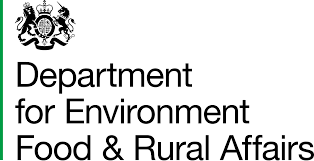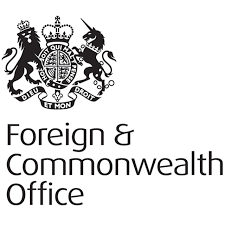PRESS RELEASE : Discovering new maerl beds on the South Coast of Cornwall [July 2024]
The press release issued by the Department for Environment, Food and Rural Affairs on 26 July 2024.
New maerl beds discovered just off the coast are crucial in supporting other marine species.
Dive into the ocean…pink?
What colours would you expect to see when dipping beneath the waves off the coast of Cornwall? Perhaps the calm blue of the waves, or the soft greens and browns of the seaweeds.
Few people would expect the rose pink of a maerl bed – the Barbieland of the underwater realm.
These slow growing, fragile beds of rare pink calcified seaweeds form the basis of marine food chains in the area, and as well as being breathtakingly beautiful, are hugely important for the local ecosystem.
Maerl beds act a little like coral reefs, slowly growing to provide three-dimensional structure which is a habitat for many other seaweeds and small organisms.
This has led maerl to be recognised for its crucial role in supporting fish populations and underpinning healthy fisheries.
It is classed as an “irreplaceable habitat”, because of its almost complete inability to recover from damage and if the maerl is lost the species it supports will also be lost.
Expedition ‘to find out more’
In England, very little maerl is thought to exist outside Cornwall, where it particularly thrives in clear waters, estuaries and tide swept bays.
The beautiful and ancient maerl beds of the Fal and Helford Estuaries in Cornwall have long been known about and were duly designated within a Marine Protected Area in 2005.
But far less is known about the maerl that exists outside the estuaries in the bays along Cornwall’s south coast, and in July, Natural England set out on an expedition to find out more.
A dive team of seaweed experts and specialist survey divers embarked on a mission to explore the areas just off the Roseland Peninsula and St Austell Bay.
Using scant knowledge from the few previous surveys, the skills of dive boat skipper Mike Anselmi from Porthkerris Divers and Natural England’s underwater drone, the team were able to find and survey entirely unknown areas of maerl beds.
Evidence will help seek better protection
Natural England’s Marine Senior Officer, Angela Gall, who led the survey said:
It’s incredible to think, that in Britain, within sight of the shore, there are still completely undiscovered sites. We will use this new evidence on the maerl bed sites to seek better protection for these ‘ancient woodlands of the sea.”
The divers surveyed the sites in detail, recording 110 different seaweed species and 79 different types of animals living on the maerl.
They assessed the health of the beds and collected photographic evidence.
Small samples were collected for genetic work by the University of Exeter, which will help with understanding the genetic uniqueness of maerl beds in this area.
The work was intensive, with detailed microscopic examination of many seaweeds, small snails and worms back at base camp following the dives.
The new information about maerl sites will be used to help target mapping efforts this autumn, adding to understanding of where these precious beds can be found.
It is hoped that by knowing where these sensitive habitats occur it will be possible to better protect them as the foundations of healthy ocean ecosystems.
The project was funded by Defra’s Marine Natural Capital and Ecosystem Assessment programme, which is leading the way in integrating natural capital and ecosystem assessment approaches into Government decision making.
Over three years, the programme is gathering evidence and developing tools and frameworks to enable us to better manage our marine natural environment, and the services it provides for people – before it is too late.



